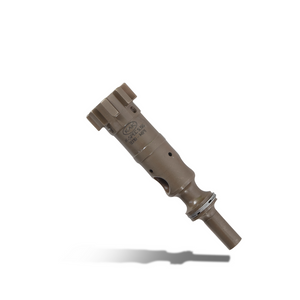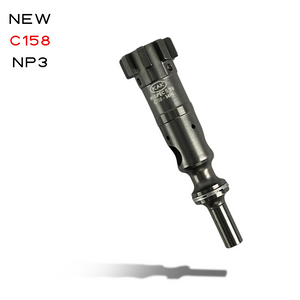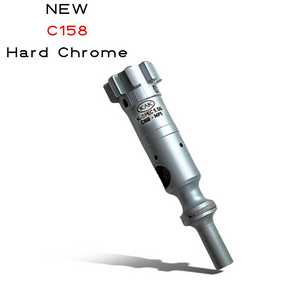
K-SPEC Enhanced AR15 Bolt- 5.56/ 300 Blackout, Dual Ejector, FDE PVD, C158
The K-SPEC dual ejector system uses mil-spec ejectors and springs that require no proprietary parts. Ejector holes are centered on the lugs to avoid any reduction in strength of the bolt. The dual ejector system increases the ejection reliability and adds consistency to the ejection pattern. KAK Industry has been manufacturing dual ejector bolts for the AR10/LR308 platform for over a decade and has used that experience to create a durable and reliable dual ejector system for the AR15 platform.
The K-SPEC Bolt is backwards compatible with all standard mil-spec BCG components. The K-SPEC bolt can be used in any AR15 style direct impingement system.
Complete Assembled Bolt Only
- Bolt- C158 steel, outside diameters ground to .0002 tolerances, Shot Peened, MPI test, FDE PVD finish
- Extractor- 4140 steel, fully machined, Phosphate coated
- Extractor pin- S7 tool steel, ground, heat treated
- Ejector- S7 tool steel, ground, heat treated
- 1.44 oz
Machined in house and assembled using only the finest steels and components. KAK Industry takes pride in producing some of the finest Mil-Spec/ Enhanced AR15 bolts available, made 100% in house at our MO facility using Doosan machining centers, Tsugami Swiss turning, and the latest in FANUC robotics combined into an automated cell giving us lights out production capability. In house automated CMM Inspection processes ensure consistent quality.
PVD (Physical Vapor Deposition) coating is a process used to apply thin films or coatings to surfaces, offering a range of benefits depending on the material and application. PVD is widely used in various industries, including aerospace, firearms, and manufacturing, due to its ability to improve surface properties such as hardness, corrosion resistance, and aesthetic appearance.
How PVD Works
- Vaporization: A material (typically a metal or metal compound) is vaporized in a vacuum chamber. This can be done using techniques like sputtering or evaporation.
- Deposition: The vaporized material then condenses onto the substrate (the surface being coated) to form a thin, solid film.
- Bonding: The coating adheres to the substrate surface, forming a durable layer.
Benefits of PVD Coatings
- Durability: PVD coatings are known for their hardness and wear resistance, which makes them ideal for applications where surfaces are subject to friction or abrasion.
- Corrosion Resistance: They provide excellent protection against corrosion, extending the lifespan of the coated materials.
- Caliber:
- 5.56/300Blk
- Finish:
- FDE PVD
- Type:
- K-SPEC ENHANCED
- Hand Preference:
- Right Hand





